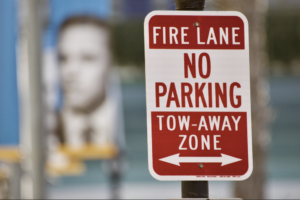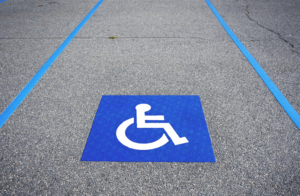Potholes in parking lots are a common problem caused by water damage, traffic wear, and fluctuating temperatures. They pose safety risks, damage vehicles, and leave a poor impression on customers and visitors. That said, here is everything you need to know about fixing parking lot potholes!
Why Potholes Form in Parking Lots
Potholes are typically caused by water seeping into cracks in the asphalt. When the water freezes, it expands, widening the cracks and weakening the pavement. As vehicles drive over the compromised areas, the asphalt breaks apart, forming potholes. Over time, this cycle of freezing, thawing, and traffic impact can lead to increasingly severe damage if not addressed.
Steps to Fix Parking Lot Potholes
The process of repairing potholes starts with thoroughly cleaning the area. Debris, dirt, and loose asphalt must be removed to ensure the repair material adheres properly. A clean surface is essential for a long-lasting fix and can be achieved with tools like a broom, blower, or pressure washer. Once the area is clean, the pothole may need further preparation. For deeper potholes, the edges should be squared off to create a stable perimeter, which helps the repair material bond effectively with the surrounding asphalt.
After preparation, filling the pothole with the appropriate asphalt mix is next. Cold-mix asphalt is commonly used for quick, temporary repairs, especially in colder weather, while hot-mix asphalt provides a more durable, long-term solution and is ideal for larger potholes or more permanent fixes. Once the pothole is filled, the material must be compacted to remove air pockets and ensure a smooth surface. This can be done with a hand tamper, plate compactor, or roller, depending on the size and scope of the repair. Finally, applying a sealant over the patched area protects it from water infiltration and helps extend the life of the repair. Sealcoating the entire parking lot can further enhance its appearance and longevity, providing protection.
Preventing Future Potholes
Fixing existing potholes is just the beginning; preventing future ones requires proactive maintenance. Regularly sealing your parking lot every two to three years protects the asphalt from water, UV rays, and chemicals, reducing the likelihood of cracks and potholes forming. Small cracks should be repaired as soon as they appear to prevent them from expanding into larger, more costly issues. Proper drainage is another key element of prevention. Ensuring water flows away from the surface of your parking lot can significantly reduce the chances of asphalt deterioration caused by standing water.
When to Call a Professional
While small potholes can sometimes be repaired with DIY methods, larger or recurring potholes often require professional expertise. A professional paving contractor has the tools, materials, and experience to assess the root causes of potholes and provide long-lasting solutions. They can also evaluate the overall condition of your parking lot and recommend additional maintenance to prevent future issues.
Repairing potholes in your parking lot is essential for maintaining a safe, functional, and professional-looking space. Nipping the problem in the bud not only prevents further damage but also saves money in the long run by reducing the need for more extensive repairs.
How can Walt’s Paving help?
You can count on Walt’s Paving to complete your residential or commercial paving project in an efficient and timely manner. We have over 40 years of experience paving asphalt driveways, making asphalt repairs, and sealcoating asphalt. We are located in Osceola, IN, and service homeowners and businesses within 50 miles of Elkhart, IN. Call us today.







